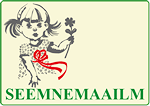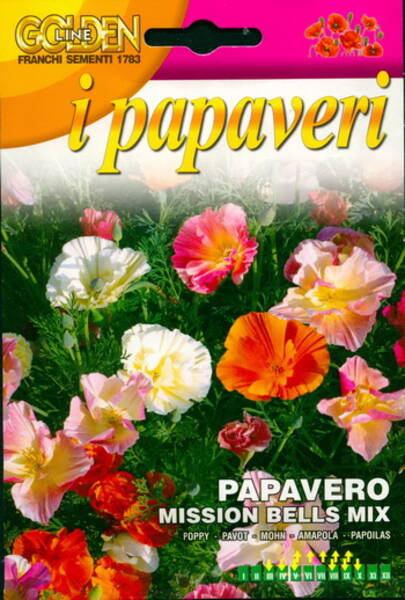Delicate petals are corrugated, so as a result, their overall appearance looks super lush and luxurious.
It is very loved by gardeners for its unpretentiousness and ease of cultivation, since aescholzia is grown without seedlings.
Despite any whims of our northern summer, it always looks great!
Eschsholzia is suitable for both flower beds and border plantings. A little tip: plant escholzia paired with Potentilla - the visual effect is simply amazing!
Moreover, Potentilla does not have to be yellow, you can take white or red varieties ...
In balcony boxes, Escholzia also produces impressive flowering results from early summer to late autumn.
California poppy (Eschscholzia) is sown in open ground in April (when the snow is already starting to melt) or in mid-October (before a frosty crust forms on the soil).
Eschscholzia has a powerful and well-developed root system that penetrates deep into the soil, so it does not need frequent watering, which makes this beauty so desirable for gardeners.
Soils must be well-drained, ideally neutral (pH 6).
Due to the dense and powerful root system, transplanting escholcia is given with great losses, so it is better not to risk flowers.
It also actively reproduces by self-sowing, so it will gradually fill more and more space around, therefore, if there is no need to increase the area of growth, remove the inflorescences from the bushes (cut off for bouquets) or remove the already formed seed pods.
When sowing before winter, cover the seeds with a thick layer of foliage so that the cold does not damage further development, then you will see the first flowers in May!
.jpg)
* The genus Eschscholzia belongs to the poppy family and includes about a dozen species of annual and perennial plants that grow in the western part of North America on the sandy and rocky soils of the deserts and semi-deserts of California.
A few years after the famous biologist Adelbert von Chamisso described this magnificent plant, California poppy (Eschscholzia californica) began to be cultivated in Europe, and in the USA it became the official symbol of the state of California. Native American tribes used boiled stems and leaves of Eschscholzia for food, and the flowers as a dye in the production of vegetable oils.
In all Eschscholzia species, the flowers open towards the sun, and on cloudy days and with the onset of evening, they prefer to "sleep". This has important biological significance - the petals protect the pistil and stamens with pollen from rain and wind. The time of flower opening coincides with the period of insect activity - bees and butterflies willingly visit Eschscholzia. And when the seeds ripen, birds also flock to it.
A distinctive feature of the genus is the deciduous calyx (a cap with a sharp tip), formed by two fused petals.
This, as well as its "diurnal lifestyle", is related to the German common name for Eschscholzia - Schlafmützchen (nightcap). It is interesting to observe how, like a butterfly spreading its wings, the flower blooms and sheds its cap.
Eschscholzia has delicate, blue-green leaves covered with a waxy coating. The basal leaves are rosette, the stem leaves are petiolate.
The flowers are solitary, cup-shaped with thin, silk-like petals. The edges of the petals are smooth, wavy, or corrugated.
The fruit is a dry, pod-shaped capsule. The seeds are small; when ripe, they separate from the placenta and fall into the soil.
The plant often self-seeds, so it can be grown in the same place for several years by thinning the seedlings in spring.
Of the three species, the varieties and hybrids of Eschscholzia californica are the most popular. Hybrids have the largest flowers - up to 7 cm in diameter, single and double. The flowering period for individual flowers is short, but the plant, which reaches 30-60 cm in height, produces many flowers.
For Eschscholzia, only well-lit flower beds are suitable.
It combines excellently with other sun-loving annuals, with large groups of plants being the most effective.
Eschscholzia is drought-tolerant and looks great in containers and planters. It is not demanding on soils.
Eschscholzia is sown directly into the ground in late April - early May in a permanent location, as it does not tolerate transplantation.
The seeds are small - 1 g contains 600 to 900 seeds. To grow a hundred plants, 0.5 g of seeds is required. Seedlings appear in 10-12 days.
.jpg)
California poppy, gold poppy. Bot. syn.: Eschscholtzia californica Cham., Eschscholzia mexicana Greene, Eschscholzia procera Greene.












